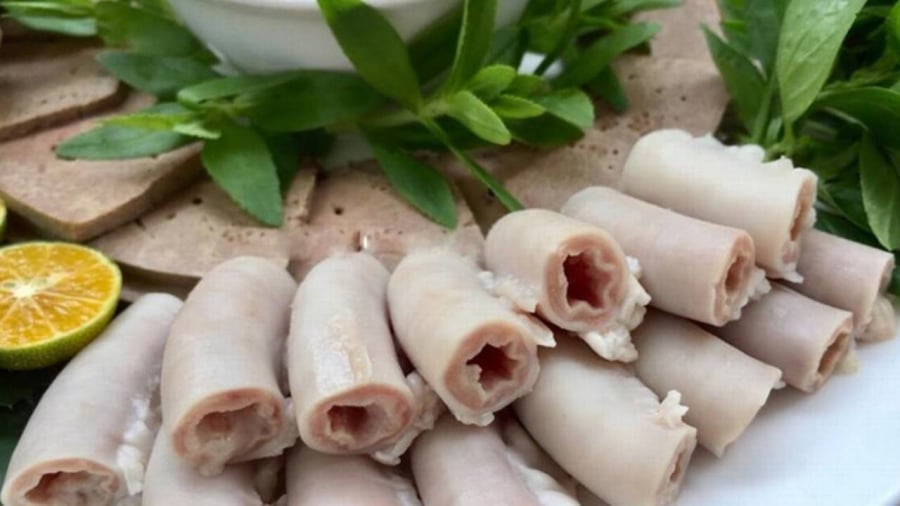**Choosing Offal Incorrectly:** One common mistake when selecting pork offal is to choose thin sections with a yellowish liquid inside. These parts tend to be chewy and bitter, lacking flavor.
Instead, opt for the thicker, crunchier, and milkier head portion of the offal. However, as this section is often favored by many, it tends to sell out quickly.

Boiled Pork Offal
**Boiling Offal in Cold Water:** A critical error is to place offal in cold water and then heat it up. This method results in chewy offal, losing its crunch. For tasty offal, boil water vigorously first, and then add the offal.
**Overboiling:** Overboiling offal leads to chewiness and a loss of crunch. Once you place the offal in the boiling water, let it cook briefly before quickly removing it to retain its perfect crunch.
**Not Soaking Offal in Cold Water After Boiling:** Another mistake is not soaking offal in cold water post-boiling. After removing the offal, immediately immerse it in a basin of cold water with lemon or a few ice cubes. This ensures the offal remains crisp, white, and unblemished. Allowing the offal to cool naturally will result in chewiness and unappealing darkening.
**Secrets to Boiling White, Crisp, and Bitter-Free Pork Offal**
To achieve white, crisp, and bitter-free pork offal, consider the following tips:
**Selecting Delicious Offal:** For tasty offal, it’s crucial to choose wisely. Opt for the head sections, where the intestines are round, pinkish-white, and contain milky liquid. Steer clear of large, thin, yellowish, or dark parts with blood vessels, as they tend to be bitter and chewy.
**Cleaning Offal Properly:** Thoroughly cleaning offal is essential to maintaining its freshness. There’s no need to aggressively rub the offal with salt, ginger, lemon, or alcohol. Simply turn the intestines inside out, remove the fat layer, and use a mixture of flour and salt to scrub it well. Then, rinse under running water. Finally, rub lemon on the offal to eliminate any remaining impurities before giving it a final rinse.
**Boiling Offal Precisely:** Prepare a basin of cold water with a few drops of lemon or slightly acidic water, bring it to a boil, and then let it cool. Boil water, add the offal, and include some ginger for enhanced aroma.
When the water has been boiling for 2-3 minutes, and the offal turns pinkish, remove it and soak it in the prepared cold water. This process ensures the offal remains crisp, white, and unblemished. The boiling time varies from 7 to 10 minutes, depending on the quantity of ingredients.
**Note on Boiling Intestines:** For intestines, simply reboil for a few minutes and turn off the heat. Then, remove the intestines and soak them in a basin of boiled water with slightly acidic water and ice cubes. Once cooled, cut them into bite-sized pieces.
To ensure the boiled intestines are white and crisp, quickly remove them from the water as soon as they are cooked. Overboiling will make them chewy and less tasty. For intestines, a quick rinse under running water or a gentle pat-down to remove the inner liquid is sufficient.
What is Nậm Pịa? Exploring the Unique Delicacy and Its Cultural Significance.
Nậm Pịa is a traditional Thai dish that has captured the hearts and taste buds of many. With a unique blend of ingredients and a preparation method that is truly distinctive, this dish is a culinary adventure waiting to be discovered. Join us as we delve into the world of Nậm Pịa, exploring its origins, ingredients, and the art of savoring this delicious treat. Uncover the secrets of this timeless culinary masterpiece and embark on a flavorful journey through the cultural heritage of the Thai people.






































